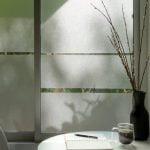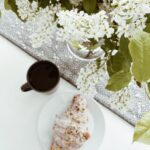Have you ever dreamed of stepping back in time and immersing yourself in the opulent elegance of the Victorian era? Well, now you can bring a touch of that timeless beauty into your own home. Decorating your space in a Victorian style allows you to create an ambiance of grandeur, sophistication, and romance. From lush colors to ornate furniture and intricate patterns, Victorian decor has a unique charm that has captivated homeowners for generations.
The allure of Victorian decor lies in its ability to transport us to a bygone era where attention to detail was paramount and every room held a sense of grandeur. The exquisite architecture, sumptuous fabrics, and rich color palettes all contribute to creating spaces that exude luxury and elegance. Whether you live in a sprawling mansion or a cozy apartment, incorporating elements of Victorian design can add depth and character to your home.
In this article, we will explore the key aspects of decorating your home in a Victorian style. We will delve into the historical context of the era, explore the preferred color palette and patterns, examine furniture styles and textiles, discuss architectural details and accessories, and highlight the importance of proper lighting. So join us as we embark on this journey through time to discover how you can create your very own Victorian-inspired haven.
Understanding the Victorian Era
The Victorian era, named after Queen Victoria who reigned from 1837 to 1901, was a time of immense change and progress in many areas of society. In order to fully grasp the essence of Victorian home decor, it is important to understand the historical context and influences that shaped this era. From societal changes to technological advancements, the Victorian era revolutionized interior design in ways that still resonate today.
Queen Victoria and Her Influence
One cannot discuss the Victorian era without acknowledging the significant influence of Queen Victoria herself. Known for her refined taste and love for all things extravagant, Queen Victoria’s personal style greatly influenced the overall aesthetic of the period. With her love for opulence and lavishness, she set a precedent for what was considered desirable in Victorian decor.
Societal Changes
The Victorian era marked a time of great social transformation. Industrialization brought about dramatic changes in several aspects of life, including architecture and interior design. As people shifted from agrarian lifestyles to urban living, homes began to reflect these transitions. Middle-class families sought a refined atmosphere and aimed to emulate the opulent grandeur associated with the upper class.
Technological Advancements
Advancements in technology during the Industrial Revolution played a crucial role in shaping Victorian home decor. The rise of mass production made ornate furniture and decorative objects more accessible to a larger population. Additionally, new techniques in manufacturing allowed for intricate detailing and designs previously only reserved for handmade craftsmanship.
Understanding the historical context of the Victorian era provides valuable insights into its influence on interior design. By embracing this knowledge, one can create an authentic Victorian-inspired home decor that stays true to the elegance and timeless appeal that defines this period.
Embracing Victorian Color Palette
The Victorian era is known for its opulence and grandeur, and one key element of Victorian home decor is the color palette. Embracing the Victorian color palette is essential for creating an authentic and elegant Victorian-style home. The preferred colors of this era embody richness and opulence, creating a luxurious atmosphere in any space.
When choosing colors for your Victorian-inspired home, it’s important to consider the prominent use of deep reds, purples, greens, and earthy tones. These colors were favored during the Victorian era due to their association with nobility and wealth. Deep reds and purples evoke feelings of luxury and sophistication, while greens symbolize nature and prosperity.
To create a harmonious color scheme in your space, you can combine these rich colors with neutrals such as creams, beiges, or taupe. Neutrals provide a backdrop for the bolder hues to shine while adding balance to the overall design. Incorporating metallic accents such as gold or bronze can also enhance the opulence of the space.
In addition to selecting appropriate colors for your walls, consider using wallpaper with intricate patterns that reflect Victorian aesthetics. Damask prints are particularly popular in Victorian decor, featuring elaborate designs that add depth and texture to a room. Floral patterns are another hallmark of this era and can be incorporated into upholstery fabrics or drapery for an authentic touch.
| Color | Meaning |
|---|---|
| Deep Red | Symbolizes wealth and luxury |
| Purple | Evoke feelings of elegance and sophistication |
| Green | Represents nature and prosperity |
| Cream | Adds balance and acts as a neutral backdrop for bolder hues |
Furniture and Upholstery
When it comes to decorating your home in a Victorian style, furniture and upholstery play a crucial role in capturing the ornate and luxurious atmosphere of the era. Victorian furniture is known for its intricate detailing, opulent materials, and grand designs.
Incorporating these elements into your home will instantly transport you back to the elegance of the Victorian era. In this section, we will explore popular furniture styles of the era and provide tips on how to incorporate them into a modern home.
The Victorian era saw a resurgence of various historical furniture styles, including Rococo, Renaissance Revival, and Eastlake. Rococo furniture was characterized by its curvaceous forms, elaborate carvings, and luxurious finishes such as gold leaf or mother-of-pearl inlays.
Renaissance Revival furniture drew inspiration from classical Greek and Roman designs, featuring grandiose proportions, carved motifs, and richly upholstered pieces. On the other hand, Eastlake furniture took a simpler approach with clean lines, geometric patterns, and an emphasis on function over ornamentation.
To incorporate these furniture styles into your home while maintaining a modern touch, consider mixing antique pieces with contemporary ones. A Victorian-inspired sofa or dining table can serve as a focal point in any room while being complemented by sleeker chairs or side tables. Alternatively, you can opt for reproduction Victorian-style furniture that combines traditional aesthetics with modern construction techniques.
When it comes to upholstery choices for your Victorian-style furniture, embrace lush fabrics like velvet or brocade that exude luxury. Plush upholstery not only adds visual interest but also enhances comfort-a key characteristic of Victorian homes. Incorporate rich colors such as deep reds, purples, greens, or golden tones to create an air of opulence.
To summarize the main points:
- Choose authentic or reproduction Victorian-style furniture that represents popular styles of the era such as Rococo, Renaissance Revival, or Eastlake.
- Mix antique furniture with contemporary pieces to create a balance between the old and the new.
- Opt for lush upholstery fabrics such as velvet or brocade in rich colors to enhance the luxurious ambiance of your Victorian-style home.
With these tips in mind, you’ll be able to select and arrange furniture and upholstery that capture the ornate and luxurious essence of Victorian decor while adding a touch of modernity. The next section will delve into patterns and textiles-a crucial aspect of achieving an authentic Victorian look in your home.
| Key Points | Furniture and Upholstery |
|---|---|
| Furniture Styles | Rococo, Renaissance Revival, Eastlake |
| Mixing Styles | Combine antique and contemporary furniture |
| Upholstery Fabrics | Velvet, brocade |
| Upholstery Colors | Deep reds, purples, greens, golden tones |
Patterns and Textiles
When it comes to decorating your home in a Victorian style, patterns and textiles play a vital role in achieving an authentic and elegant look. Victorian decor is known for its intricate designs and layering techniques, which add depth and richness to any space. In this section, we will explore the importance of patterns and textiles in Victorian decor, as well as provide guidance on incorporating these elements into your home.
Incorporating Victorian Patterns
One of the defining characteristics of Victorian decor is the use of elaborate patterns. Floral, paisley, damask, and brocade are some of the most common patterns found in Victorian homes. These vibrant and detailed designs can be incorporated into upholstery, drapery, wallpaper, or even smaller decorative items like throw pillows or tablecloths.
When choosing Victorian patterns, it’s essential to consider the overall color scheme of your space. Opt for fabrics that feature deep, rich hues like burgundy, navy blue, emerald green, or gold. These colors will enhance the opulence and elegance associated with Victorian style while creating a cohesive look.
Layering Textiles
Another key aspect of Victorian decor is layering textiles to create depth and visual interest. To achieve this look, start by selecting a focal point such as a sofa or bed. Layer different textures by combining items made from velvet, silk, lace or satin. For example, drape a velvet throw blanket over a silk-upholstered chair or place lace doilies on top of a wooden coffee table.
In addition to layering various fabrics throughout your space, you can also experiment with different types of textiles in specific areas. For example,pair heavy curtains with sheer panels for windows or combine different patterned rugs on hardwood floors to bring warmth and coziness to the room.
Remember that balance is crucial when layering textiles – too many contrasting patterns can overwhelm the space while too few may appear underwhelming. Aim to strike the right balance by incorporating patterns and textiles strategically throughout your home.
Accessorizing with Victorian Textiles
Victorian decor also involves using textiles as decorative elements in various accessories. Incorporate patterned fabrics into items such as throw pillows, table runners, or wall hangings. Seek out intricately embroidered or tasseled pieces to add a touch of Victorian sophistication to your space.
When it comes to choosing textiles for your home accessories, don’t be afraid to mix and match different patterns as long as they complement each other. Consider contrast – pairing a floral tablecloth with paisley napkins can create an intriguing visual effect. Additionally, coordinating the colors in the textiles with the existing color palette of your room will help tie everything together seamlessly.
By incorporating intricate designs and layering techniques through patterns and textiles, you can infuse your home with the timeless elegance that characterizes Victorian decor. Remember to choose rich, opulent colors and experiment with layering fabrics to create a luxurious and visually striking look. Accessorize with Victorian-inspired textiles in various areas of your home to complete the overall aesthetic.
Architectural Details
When it comes to creating a Victorian-style home, paying attention to architectural details is essential. The architectural elements of the Victorian era are known for their ornate and gilded touches, which add opulence and grandeur to any space. Incorporating these elements into your home will help you achieve an authentic Victorian look. Here are some tips on how you can incorporate architectural details with gilded touches and ornamentation in your Victorian-style decor:
- Crown Molding: Crown molding is a must-have architectural detail in Victorian homes. It adds elegance and sophistication to the room while also visually dividing the walls from the ceiling. Look for intricately designed crown molding with ornate patterns and detailing to capture the essence of Victorian decor.
- Ceiling Medallions: Another hallmark of Victorian architecture is the use of ceiling medallions. These circular decorative pieces are typically placed around light fixtures or chandeliers to enhance their visual appeal. Opt for medallions with intricate designs and gilded accents to create a true homage to the Victorian era.
- Corbels: Corbels are architectural brackets that support additional weight, such as shelves or mantels. In Victorian homes, corbels are often elaborately carved or adorned with gilding, giving them a luxurious touch. Consider incorporating corbels into your space by using them as decorative accents underneath shelves or mantelpieces.
- Wainscoting: Wainscoting is a type of wall paneling that is commonly found in Victorian homes, adding charm and character to rooms. Opt for wainscoting that features raised panels, beadboard detail, or ornate trims painted in rich colors like deep mahogany or dark green.
Remember that while incorporating these architectural details is important, it’s equally essential to strike a balance between authenticity and personal taste. Customize these elements based on your preferences, while staying true to the elegance and charm of Victorian decor. By paying attention to architectural details with gilded touches and ornamentation, you can create an enchanting Victorian-style home that transports you back in time.
Accessorizing with Victorian Taste
In the world of Victorian home decor, accessorizing plays a crucial role in bringing authenticity and charm to any space. The right decorative objects and artwork can truly elevate the overall aesthetic and create a sense of opulence. In this section, we will explore the significance of accessorizing in Victorian decor and provide suggestions for incorporating Victorian-style accessories into different areas of your home.
One key aspect of Victorian decor is the use of decorative objects that exude elegance and craftsmanship. Porcelain figurines, such as delicate china dolls or ornate vases, were highly popular during the era.
These intricate pieces can be displayed on mantels, side tables, or shelves to add an air of sophistication to any room. Additionally, incorporating ornate mirrors with gilded frames can create a stunning focal point on the walls while reflecting light and giving the illusion of a larger space.
Artwork also played a significant role in Victorian homes, often depicting romanticized landscapes or classical scenes. Oil paintings with ornate gold frames are an ideal choice for creating an authentic Victorian look. Hang these artworks strategically throughout your home, such as in the dining room or living area, to evoke an atmosphere reminiscent of grandeur and refinement. Alternatively, if original oil paintings are not within reach, high-quality reproductions or prints can still capture the essence of Victorian art.
When it comes to accessorizing with Victorian taste, paying attention to small details is essential. Antique trinkets like pocket watches, cameo brooches, or intricately designed keys can be displayed in curio cabinets or on decorative trays. To complete the overall look, consider adding velvet or lace table runners with embroidered details or tassels on fringed lampshades for an extra touch of elegance.
By thoughtfully selecting decorative objects and artwork that align with the Victoriandecor style, you can infuse your home with timeless beauty while showcasing your personal style. Remember that successful accessorizing is about striking a balance between showcasing these pieces and avoiding clutter. With careful curation, your Victorian-style home decor will be an impeccable reflection of the era’s opulence and refinement.
Lighting
Proper lighting is an essential element in creating an authentic Victorian-style atmosphere in your home. The right lighting fixtures can enhance the elegance and charm of Victorian decor, casting a warm glow that brings the space to life. In this section, we will explore the importance of lighting in achieving a Victorian aesthetic and discuss traditional fixtures and strategies for creating the ideal Victorian lighting ambiance.
In Victorian homes, chandeliers were a popular choice for grandeur and sophistication. A sparkling centerpiece suspended from the ceiling, a chandelier not only provides ample illumination but also serves as a stunning focal point in any room. Opt for crystal or glass chandeliers with ornate designs to capture the essence of Victorian style. Place them in entryways, dining rooms, or sitting areas to create a sense of opulence.
Sconces are another classic lighting fixture commonly found in Victorian homes. These wall-mounted fixtures add elegance and provide soft ambient lighting to any space. Choose sconces with intricate details and embellishments like brass or bronze finishes to complement the overall Victorian theme. Install them on either side of mirrors, doorways, or along hallways to create a warm and inviting atmosphere.
To fully embrace Victorian lighting in your home, it’s important to consider strategies that enhance the overall ambiance of each space. Layered lighting can be achieved by incorporating table lamps with ornate bases and lampshades featuring rich fabrics like silk or velvet. This creates pockets of cozy illumination for reading nooks or side tables.
Conclusion
In conclusion, decorating a home in a Victorian style allows you to embrace the timeless elegance and charm of this era. By understanding the historical context of the Victorian era and its influence on interior design, you can create a space that captures the essence of this period while still reflecting your personal style.
One essential aspect of Victorian decor is the color palette, which exudes richness and opulence. Deep reds, purples, greens, and earthy tones are key colors to incorporate into your design scheme. Additionally, furniture plays a significant role in Victorian decor, so be sure to choose ornate and luxurious pieces that reflect popular styles of the era such as Rococo or Renaissance Revival.
Patterns and textiles are another crucial element in Victorian decor. Intricate designs layered throughout upholstery, drapery, and wallpaper will enhance the authenticity of your space. Don’t forget about architectural details either – incorporating gilded touches and intricate ornamentation through crown molding, ceiling medallions, or corbels will further enhance the overall aesthetic.
When it comes to accessorizing your Victorian-style home decor, decorative objects and artwork are key. Porcelain figurines, ornate mirrors, and oil paintings can be strategically placed throughout different areas of your home to create an atmosphere reminiscent of the Victorian era. Proper lighting is also essential in achieving an elegant ambiance – consider traditional fixtures such as chandeliers and sconces to illuminate your space.
Frequently Asked Questions
How do I make my house look Victorian?
To make your house look Victorian, there are several key elements and features that you can incorporate into your design. Victorian architecture often includes prominent exterior detailing, such as decorative trim work, ornate brackets, bay windows, and steep roofs with multiple gables. Inside the house, consider using a color palette that reflects the era, including deep rich colors like burgundy, navy blue, or hunter green for walls and upholstery.
Incorporate ornate crown moldings and baseboards throughout the space to add a touch of elegance. Furniture should reflect the time period’s style with pieces that have curved lines and intricate details. Lastly, include vintage accessories such as lace curtains, crystal chandeliers, antique mirrors, and decorative wallpapers to complete the Victorian aesthetic.
What is modern Victorian decorating style?
Modern Victorian decorating style combines elements from both the Victorian era and contemporary design to create a unique blend of old-world charm and modern sensibilities. In this style, traditional Victorian architectural details are preserved but often balanced with clean lines and minimalistic furniture choices. The color palette tends to be softer than traditional Victoriana, with neutrals like whites, creams, greys used as base colors while pops of pastel hues or jewel tones are added through accessories or accent furniture pieces.
Mixing vintage pieces with more modern furnishings is common in modern Victorian decor to achieve a balanced look between old and new styles. It is important to find a harmonious blend between classic elegance and sleek simplicity when creating a modern Victorian aesthetic.
What is a typical feature of a Victorian style house?
A typical feature of a Victorian-style house is its elaborate architectural details both on the interior and exterior. These houses often feature steep roofs with multiple gables, intricately designed gingerbread trim work adorning eaves and porches, large bay windows allowing natural light into rooms while showcasing fine craftsmanship in their frame designs. Siding materials like wood shingles or ornamental bricks were commonly used in these homes’ construction.
Inside the house, high ceilings with decorative crown moldings, elaborate ceiling roses, and intricate woodwork are typical features. Victorian-style houses often have multiple fireplaces, each featuring individual mantels with ornate carvings. These houses also incorporate stained glass windows and detailed staircases that add to the overall grandeur of the architectural style.

I’m thrilled to be your companion on this exciting journey through the world of home decor and design. With a passion for turning houses into homes and a keen eye for the finer details, I’m here to help you transform your living spaces into beautiful, functional, and meaningful havens.





